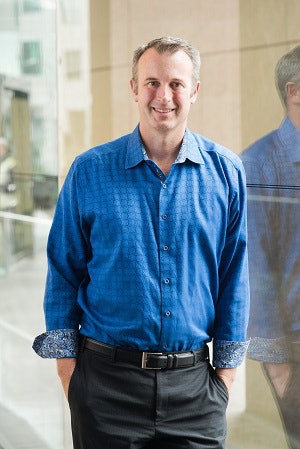The college lifestyle – famous for hectic schedules, late-night study sessions and 2 a.m. pizza – has never gone hand-in-hand with good health.
But today’s college students are the least likely generation to go to a primary care doctor. Only 55 percent of Generation Z have a primary care physician, compared to two thirds of millennials and 76 percent of Generation X, according to a 2019 Digital Health Consumer Survey. Meanwhile, a report last year found that 1.7 million college students remain uninsured.
 Dr. Bradley Younggren
Dr. Bradley YounggrenCampuses are increasingly turning to telemedicine – online health services – as a solution.
Telemedicine is “expanding the reach of the health system to capture patients who wouldn’t otherwise engage,” said Dr. Bradley Younggren, chief medical officer of the Seattle-based telemedicine start-up 98point6. “We need to find new and creative ways to get those patients to reengage with primary care.”
98point6 partnered with Ohio Wesleyan University to provide students with free telemedicine services and plans to work with two more schools in the fall. Patients text with an AI bot, which puts them in touch with an appropriate 98point6 doctor. The entire session can be conducted over text or the doctor can switch to a video call, if necessary.
“Students are definitely comfortable using our service,” Younggren said. “They’re used to using text as a medium to communicate. They use it every day of their lives.”
Telemedicine is also better suited to students’ busy academic schedules, he added. They can get answers to health questions “while they’re on the move – between classes [or] on the bus.”
The goal is to get students “the right care at the right time,” Younggren said. He intends for telemedicine to “augment” rather than replace pre-existing services.
Another benefit of the app is that it can refer students to in-person resources available on their campuses, like on-campus lab testing or counseling. Referring students to other university health services “improves our relationship and trust with the students,” Younggren said.
Because students can use 98point6 for free through their university, they’re less likely to ignore health problems to avoid an expensive or time-consuming doctor’s visit. If students have to pay $50 for an appointment, they’d rather turn to “Dr. Google” for help.
“We know that many healthcare journeys begin online with a search engine, and the reason is that it’s easy to get to and it’s free,” Younggren said. “We want to provide better value for our patients, including university students.”
When students can ask their everyday health questions – instead of just going to the doctor for emergencies – telemedicine not only “takes care of patients in sickness but really allows you to move back to taking care of patients in wellness,” he said.
That said, free telemedicine isn’t the norm, according to Dr. Ryan Spaulding, acting director of the KU Center for Telemedicine and Telehealth at the University of Kansas Medical Center. Like any health service, it generally comes with a cost, though more insurance companies are beginning to cover it.
 Dr. Ryan Spaulding
Dr. Ryan SpauldingIn general, telemedicine has grown in popularity. A 2018 survey of healthcare executives found that 56 percent of their organizations offered telemedicine. Of the remaining 44 percent that didn’t offer it, 86 percent of executives reported that incorporating telemedicine was a medium to high priority for their organizations.
Telemedicine is now used for all kinds of care – preventative care, primary care, substance abuse – but it’s particularly useful for mental health, Spaulding said. Telemedicine can “reduce some of that stigma” students may feel when they seek out counseling at a campus health center – assuming they even have that option nearby, he said.
“Mental health services are really scarce and hard to find, especially in some locations like rural communities or urban areas,” he said. “So, having that access on a campus would certainly be a benefit that might not be there without telemedicine.”
Data from 98point6 backs that up. Students and other patients increasingly used the app for behavioral health services.
Sarah Caliboso-Soto, the interim director of the University of Southern California Telehealth Clinic, sees telemedicine as an important tool for campus mental health. While not specifically for students, her clinic offers weekly video counseling services for all kinds of patients and partners with four community colleges.
Community colleges in particular have “huge mental health needs,” she said. They often lack the resources to provide counseling for all students in need, and the services that do exist tend to have long wait lists.
“We have been a huge asset to them,” she said. “We have been welcomed with open arms to provide services to their students.”
Caliboso-Soto recognizes that telemedicine isn’t for everyone. She understands the concern that therapists sometimes need to be in the room to “pick up subtle behaviors or mannerisms,” especially for patients with extreme depression. But she thinks telehealth “increases availability and accessibility” for the many patients who use it.
“No matter where you are, there’s always a concern someone might miss something,” she said. “But I believe that online is all about trust and rapport and having a communication that’s very honest and genuine – and that can happen online or in-person, depending on the clinician.”
Because of the benefits, Spaulding thinks telemedicine options – for students and other patients – will continue to grow, both from private companies like 98point6 and healthcare providers like University of Kansas Medical Center.
“We’re always being creative in trying to provide care,” he said.
Sara Weissman can be reached at [email protected]





















